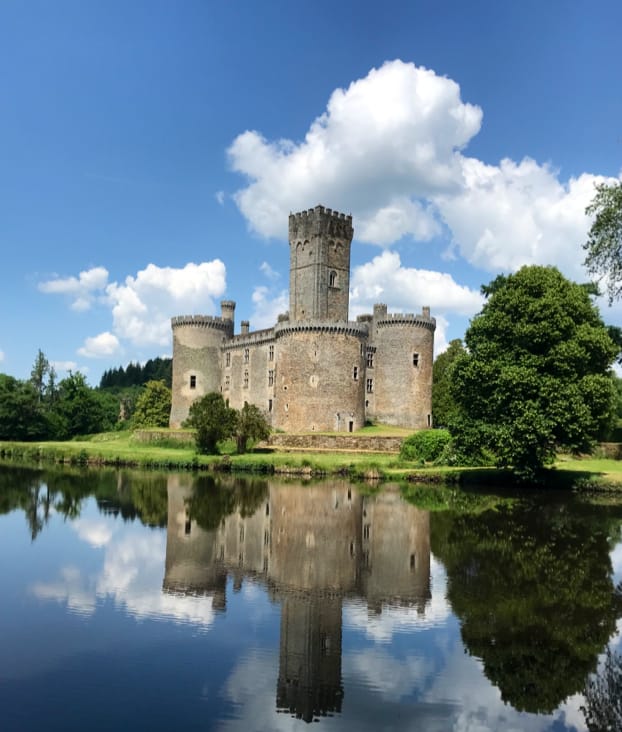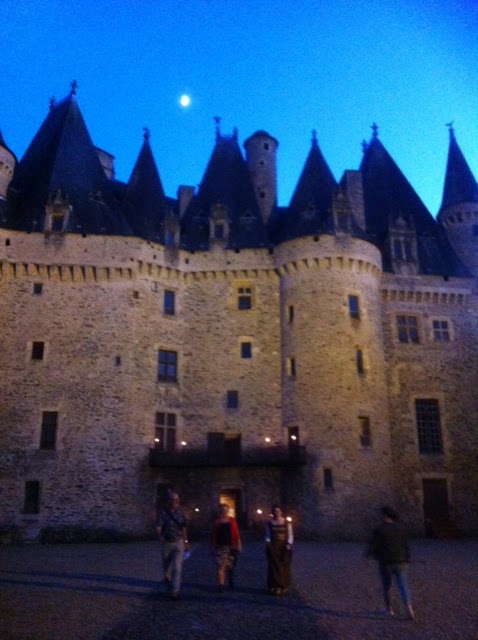Château de Châlus-Chabrol: A Medieval Fortress in France
Visitor Information
Google Rating: 4.4
Popularity: Low
Google Maps: View on Google Maps
Official Website: www.chateau-chalus-chabrol.com
Country: France
Civilization: Medieval European
Remains: Military
History
Château de Châlus-Chabrol is a medieval fortress located in the town of Châlus in France. It was built by the viscounts of Limoges during the 11th century to guard an important border route between Limoges and the region of Périgord.
From its construction, the castle served a strategic purpose, controlling the frontier area between the domains of the counts of Périgord and the viscounts of Limoges. Over time, this frontier evolved into a dividing line between the Duchy of Aquitaine, under the Plantagenet rulers of England, and lands directly held by the French crown. This made the fortress a critical military outpost throughout the Middle Ages.
One of the castle’s most notable historical moments occurred in March 1199 during a siege led by Mercadier, a commander acting for King Richard I of England, also known as Richard the Lionheart. Despite being defended by only around 38 people, including two knights, the castle held firm. During the fighting, Richard was struck by an arrow or crossbow bolt fired from the castle’s keep by the defender Pierre Basile. Mortally wounded, Richard died shortly after on April 6, 1199. This event was documented by chroniclers of the period and gave rise to stories about the castle’s significance.
The motive behind the siege is believed to have involved a dispute over a considerable treasure of gold reputedly hidden within the castle. Medieval chroniclers like Rigord referenced this treasure, and later legends spoke of Lucius Capreolus, a fictional Roman proconsul said to have founded the fortress. These stories enhanced the castle’s mystique but remain part of medieval narrative tradition rather than verified history.
During the 13th century, ownership of Château de Châlus-Chabrol shifted to Géraud de Maulmont, before King Philip IV of France confiscated it. Subsequently, it was sold to the House of Albret. Through marriage, Charlotte d’Albret brought the property as a dowry to Cesare Borgia. The Bourbon-Busset family eventually held the castle until the late 20th century.
In the late 16th century, the castle was a site of conflict during the French Wars of Religion. In 1592, Protestant forces captured it, but shortly after, Catholic troops recaptured the fortress following artillery bombardments. The building suffered damage and was partly dismantled during the French Revolution. Restoration efforts were initiated in the 19th century by the Count of Châlus, who established a religious community there in 1854 and repaired the main tower in 1861.
Further restoration took place after 1995 under Bertrand Heyraud, culminating in a commemorative event in 1999 marking the 800th anniversary of King Richard’s death. This ceremony attracted high-profile figures including the Queen of England and the French president Jacques Chirac.
Since 1944, the castle site has been protected as an official historical monument, with key structures receiving additional classification and inscription status in 1981. Despite its ruined condition, these protections help preserve the legacy and rich history of Château de Châlus-Chabrol.
Remains
The Château de Châlus-Chabrol is situated on a rocky promontory overlooking the town, positioned above the right bank of the Tardoire River. The castle’s original layout included a double line of defensive walls, known as a double enceinte, surrounding a single gate. These walls were designed mainly as passive protection, featuring thick, nearly windowless stretches to discourage attackers and provide refuge.
Central to the complex is the donjon or keep dating from the 11th century, likely rebuilt after the siege of 1199. This massive stone tower was the castle’s strongest defensive point and remains one of its most prominent surviving features. Nearby, a round corner tower of similar medieval origin also still stands, forming part of the castle’s original fortifications.
Alongside the defensive structures, the site contains the corps de logis, a residential building where inhabitants once lived. The oldest parts of this living quarters also date back to the 11th century and include a ground floor with two rooms and an underground vaulted hall characterized by a dome-shaped ceiling. This arrangement is attributed to Gérard de Maulmont, who owned the castle in the 13th century and added these residential elements.
Beyond the military and residential constructions, remnants of two chapels contribute to the site’s history. One castral chapel originates from the 10th or 11th century and was later converted into a parish church. A smaller chapel from the 15th century is also present, reflecting continued religious use of the site through the late medieval period.
Additional buildings include a 17th-century corps de logis, constructed in a later phase. Although partially preserved, its facades and roofs have received official protection status. A well on the grounds provided water for the castle’s residents.
Across the valley from Château de Châlus-Chabrol stands Château de Châlus-Maulmont, a related fortress dating to the late 12th century. The proximity highlights the strategic importance of this area in medieval times.
Near the chapel, visitors today find a modern cement cenotaph dedicated to Richard the Lionheart, marking the location where he ordered his entrails to be buried following the fatal siege. This monument symbolizes the longstanding connection between the castle and the English king’s dramatic final moments.
Despite its current ruinous state, several original medieval structures including the donjon, corner tower, and the oldest parts of the corps de logis have been stabilized and partially restored. Their facades and roofs are legally protected, ensuring their preservation for future generations interested in this historically significant fortress.










